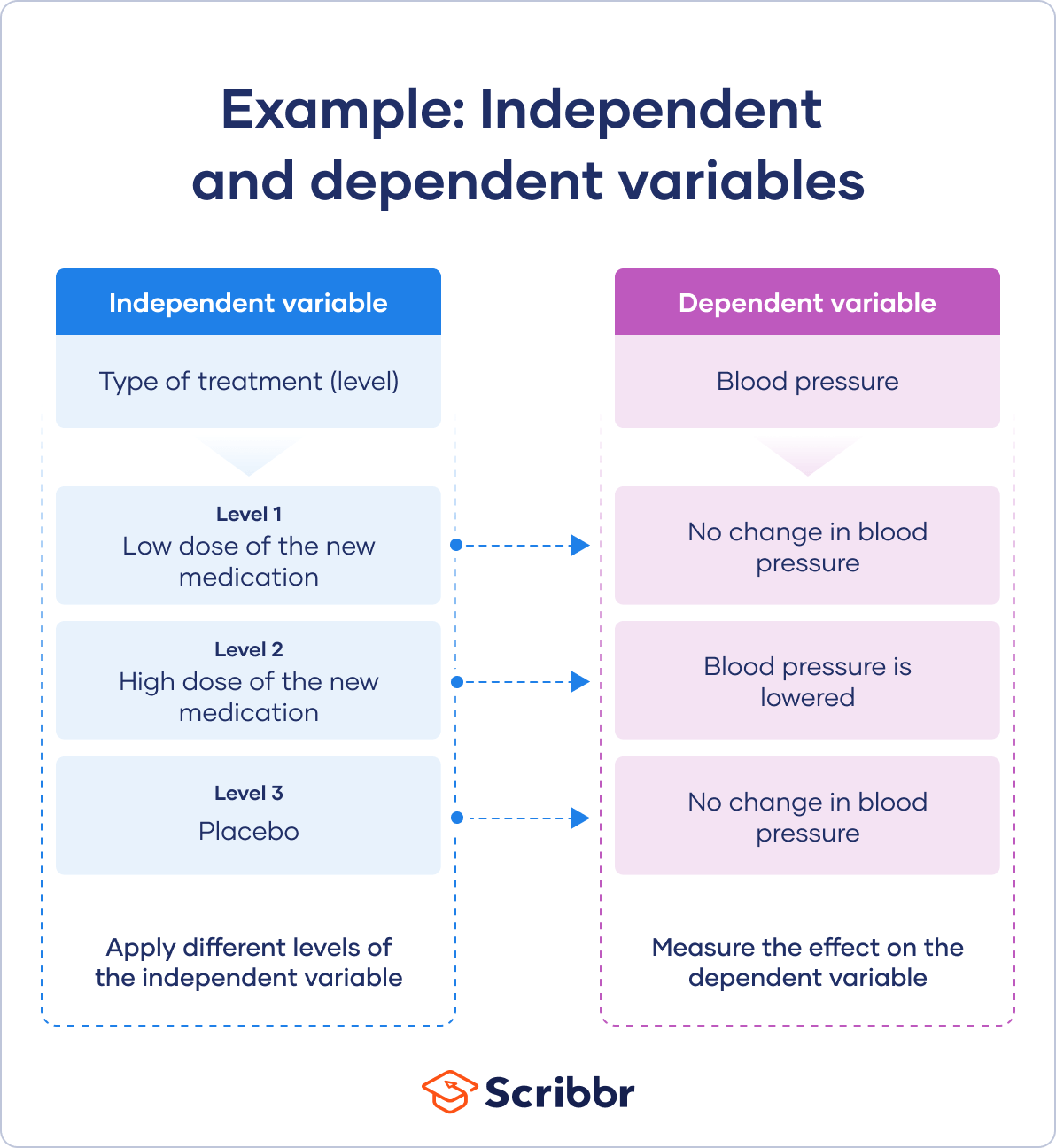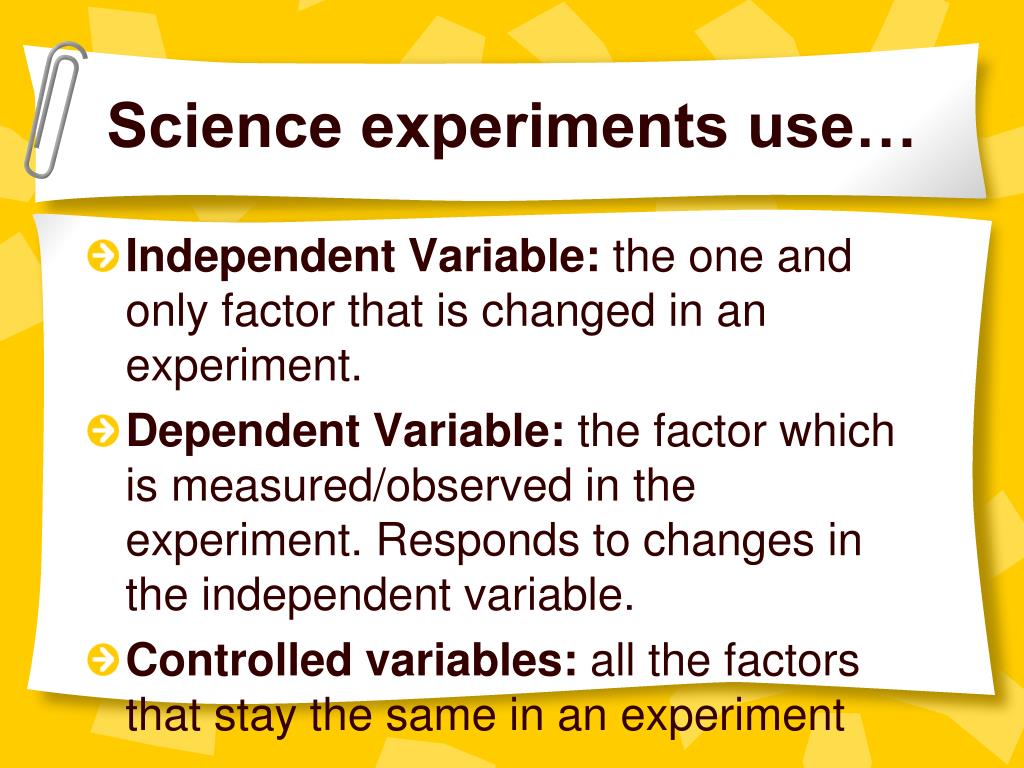In the realm of scientific investigations, uncovering the relationships between variables is essential to unraveling the mysteries of our world. Experiments serve as a cornerstone in this pursuit, allowing researchers to meticulously manipulate and observe variables to establish cause-and-effect relationships.

Image: www.scribbr.co.uk
At the heart of every experiment lies the notion of variables, the modifiable factors that influence the outcome. Among these variables, two distinct types emerge: dependent and independent. Understanding their roles is crucial for deciphering experimental data and drawing meaningful conclusions.
Dependent Variable: The Consequence of Change
The dependent variable is the variable that changes or is measured in response to changes in the independent variable. Its value hinges upon the alterations made to the independent variable, hence the term “dependent.” For instance, in an experiment studying the effect of fertilizer on plant growth, the plant’s height would be the dependent variable, as its growth is influenced by the amount of fertilizer applied.
Identifying the dependent variable is vital for a successful experiment. meticulous observations and accurate measurements are essential to capture its variations and establish the relationship between the variables.
Independent Variable: The Agent of Change
In contrast to the dependent variable, the independent variable is controlled and adjusted by the experimenter. It is the factor that is purposefully manipulated to gauge its effect on the dependent variable. Returning to the plant’s growth experiment, the amount of fertilizer applied would be the independent variable, as it is directly controlled by the experimenter.
Experimenters exercise precise control over the independent variable to ensure consistency and isolate its impact on the dependent variable. This careful manipulation allows them to draw more accurate conclusions about the cause-and-effect relationship.
Delving into the Relationship
The relationship between the dependent and independent variables is the heart of any experiment. By systematically varying the independent variable, researchers gain valuable insights into how it affects the dependent variable. Some common relationships include:
- Positive Correlation: Increasing the independent variable value leads to a proportionate increase in the dependent variable.
- Negative Correlation: An increase in the independent variable value results in a decrease in the dependent variable.
- Linear Relationship: The dependent variable changes at a constant rate as the independent variable increases.
- Non-linear Relationship: The dependent variable changes at a varying rate as the independent variable increases, potentially exhibiting parabolic or exponential patterns.
Uncovering the relationship between variables enables researchers to make predictions about how changes in one factor will affect the other. This knowledge forms the basis of scientific discovery and practical applications, from drug development to understanding climate change.

Image: lessonzonecorey.z21.web.core.windows.net
Tips for Identifying Experimental Variables
Identifying the dependent and independent variables in an experiment necessitates careful consideration of the experimental setup. Here are expert tips to guide your thinking:
- Focus on the Hypothesis: The hypothesis outlines the predicted relationship between variables. Examine the hypothesis to deduce the manipulated variable (independent variable) and the measured variable (dependent variable).
- Eliminate Extraneous Variables: Control for any external factors that may influence the outcome of the experiment. Identify and minimize these variables, or, if necessary, establish control groups to account for their impact.
- Define Measurement Techniques: Clearly establish how the dependent variable will be measured. Ensure reliable instruments and measurement techniques are employed to obtain accurate data.
Following these tips will help you establish the variables in an experiment with greater precision, which will lead to more robust results. Remember, the variables are the linchpin connecting cause and effect. Master the variables, and you master the experiment.
Frequently Asked Questions
To enhance your comprehension of this topic, we provide answers to some commonly asked questions:
Q: How do I know if a variable is dependent or independent?
A: Consider which variable the experimentercontrols and modifies. The manipulated variable is the independent variable, while the variable that changes as a result is the dependent variable.
Q: What if an experiment involves multiple independent variables?
A: Experiments can indeed involve multiple independent variables. One strategy, known as multivariate analysis, allows researchers to explore the individual and combined effects of multiple independent variables on the dependent variable.
Q: Can a variable be both dependent and independent?
A: While uncommon, it is possible for a variable to assume both roles under certain circumstances. This concept is called an “intervening variable.” However, such cases require careful experimental design to avoid confusion in interpreting results.
Which Variable Is Measured In An Experiment
Conclusion
Understanding the concepts of dependent and independent variables is fundamental to conducting and interpreting scientific experiments. By systematically varying the independent variable and measuring the dependent variable, researchers can illuminate cause-and-effect relationships and unearth valuable insights into the world around us.
If you are intrigued by the concepts explored in this article, we encourage you to delve deeper into experimental design and variable analysis. With further exploration, you will gain a profound understanding of these essential elements of the scientific toolkit.